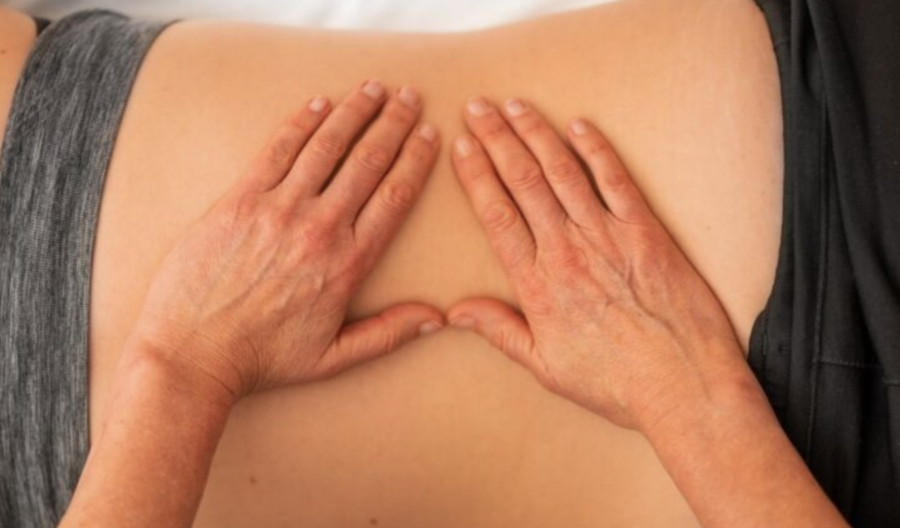Lumbar Stenosis What is it? Causes and treatments

Stenosis is a term used in medicine to define the narrowing of an orifice or duct, which may be due to multiple causes. When we speak of lumbar stenosis, we refer to the narrowing of the space inside the spinal column in the lumbar area, in which we find the spinal cord.
Why does lumbar stenosis occur?
The vertebrae of the spine are articulated between them and inside them create a conduit that protects the spinal cord. The spinal cord is responsible for connecting the brain with the rest of the body, transmitting stimuli in both directions. To prevent wear and tear and distribute the load on the spine, between the vertebrae we find the intervertebral discs, which are soft structures that act as cushions.
Lumbar stenosis occurs when the spinal canal or spinal canal space is reduced, its causes may be several:
- A herniated or protruded disc: When the ring of intervertebral discs is totally or partially ruptured, they become deformed and may partially obstruct the spinal canal.
- Ligamentous stiffness: The various vertebrae are joined together with the help of ligaments that hold them together. Over time, these become stiffer and may even thicken and cause stenosis.
- Bone growth disorders: There are certain diseases related to bone growth that can also cause narrowing of the spinal canal. Osteoarthritis can also, indirectly, be a cause of lumbar stenosis.
- Traumatic spinal injuries: A fracture in a vertebra or a spinal dislocation will most likely cause injuries to the spinal cord. It is common for nearby tissues to swell, thus narrowing the perimeter of the spinal canal.
- Tumors: Although it is a rare cause, there is a possibility that the stenosis is caused by a tumor in some part of the spinal canal.
Symptoms of lumbar stenosis
Depending on the severity of the narrowing the symptoms that the affected person will experience may be more or less severe. In general, lumbar stenosis usually causes numbness or tingling in the feet and legs, weakness in the lower extremities or cramps when standing for long periods or walking. It is also common to experience back pain originating in the lower back.
Risk factors and lumbar spinal stenosis
Except in cases of trauma or congenital deformities, most people suffering from lumbar stenosis are over 50 years of age. Obesity, a sedentary lifestyle or an eminently physical and routine professional activity may be an indirect cause of lumbar stenosis, since they could first cause a disc protrusion or a disc herniation affecting the spinal canal.
Once diagnosed, lumbar stenosis should be monitored periodically by a physician to avoid more serious complications, such as balance problems, incontinence and even paralysis.
Treatment of lumbar stenosis
Treatment may vary according to the severity of the symptoms, and evaluation and follow-up by the physician will be necessary to determine this. Pharmacological treatment and physiotherapy will be the option in mild cases, but if the pain is continuous and persistent, minimally invasive techniques and even surgery may be chosen.
- Medication: Analgesics and certain antidepressants and antiepileptics may momentarily relieve discomfort for brief periods or one-time episodes.
- Physical therapy: Muscle weakness resulting from decreased physical activity due to pain caused by stenosis can cause more pain. Physical therapy sessions can compensate for this muscle weakness through appropriate exercises that the affected person can repeat at home.
- Epidural and radicular steroid injections: This is a temporary solution to relieve pain and deficient symptoms.
- Surgery: There are different types of surgery to treat lumbar stenosis. The physician will evaluate the most appropriate in each case after an exhaustive and continuous examination.
At Instituto Aliaga we are experts in the treatment of pain, addressing it through a holistic and multidisciplinary approach, and with a great team of professionals. If you suffer from pain or if you have any questions about our treatments, please contact us or make an appointment by calling +34 935 952 910.
References:
- Ali Duarte, MD (March 2019). Spinal Stenosis | American College of Rheumatology. https://www.rheumatology.org/I-Am-A/Patient-Caregiver/Enfermedades-y-Condiciones/Estenosis-Espinal
- Carlos Santos Coto, Rafael Rivas Hernández, Ernesto Fleites Marrero (December 2019). Surgical treatment of lumbar canal stenosis | Rev Cubana Ortop Traumatol v.23 n.2. http://scielo.sld.cu/scielo.php?script=sci_arttext&pid=S0864-215X2009000200002